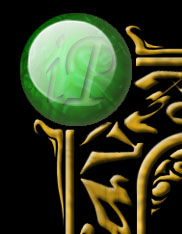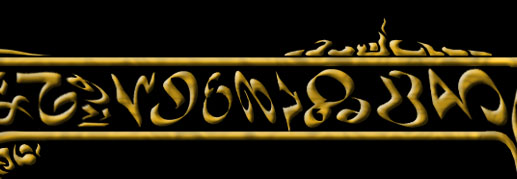









So what is this game, anyway?
Eretzvaju is a 3D polygonal fighting game, released by YUKE's Future Media Creators in 1999, and then licensed by Titus and released under the name Evil Zone in North America and Europe later the same year. Designed as a cinematic pick-up-and-play fighter, it uses only two buttons (attack and block), but fairly ingenuously mixes the amount of button presses and directions pushed to give each character a goodly number of attacks. Fighters can attack and defend themselves at both close and far range, and at both close and far range you can attempt to throw an opponent who's blocking regular attacks. As well, characters can charge up for super attacks, a process based on how much health they have remaining (so a fighter at full health takes quite awhile to gain a super charge, while a character near death can charge multiple ones almost instantly). When you successfully charge up, you gain a "jewel"; you can stock up to three jewels at once. These can be used to deliver an enhanced version of one of your regular attacks, or a single slow but very damaging super attack. Characters can move back and forth and sidestep attacks; accordingly, attackers can specifically try to hit opponents who are sidestepping (but not if they stand still or block), making matches a rock-paper-scissors test of reflexes and strategy, influenced by your chosen character's strengths and weaknesses in their special moves.
That's the game system, but what's the story like? Essentially, the game's story revolves around Ihadulca, a mysterious and powerful being that attacked the magical land of I-Praseru. She was narrowly defeated by the warriors of that world and sealed away in a magical prison; however, this is only a temporary solution, as she cannot be held for long. The four kingdoms of that world decide, over some objections, to magically summon powerful warriors from outside I-Praseru and convince them to destroy Ihadulca. All end up accepting, for their own personal reasons; by coincidence or design, many of them have relationships with each other as well. Two warriors from I-Praseru, unwilling to let outsiders risk their lives to solve their own problems, decide to end the threat of Ihadulca personally. And one other ancient, powerful being is watching all this with mysterious motives...
So that's the system and the basic story. But what's so neat about it that anybody would build a site or remember it so many years later? Well, there's several reasons why Evil Zone is a unique gem among fighters.
Evil Zone has a uniquely structured story mode. When you pick a character, you "begin a new season" of a TV show, structured around and starring the character you selected. Each show has it's own title screen, theme music, eyecatch, and episode titles. When you defeat your opponent, you're treated to a "Next Episode Preview" showing who you'll be fighting "next week", often with amusing accompanying dialogue. As well as she TV show elements, both before and after fights the two characters fighting interact, furthering the storyline for your character and giving tidbits of information about both characters. Additionally, by finishing your storyline, you unlock the Encyclopedia entry for the character, allowing you to find even more in-depth information about them and characters they are close to. I won't say flatly that it's the deepest backstory and characters that have ever been in a fighting game, but it's certainly close, and you'll be hard-pressed to find any other one-game fighter (as opposed to a series like KoF or Guilty Gear) that comes close, and the TV show elements are a hoot and get you far more into the game than most fighter's single-player modes.
Evil Zone didn't just stop at the story mode in its attempt to replicate the feel of an anime series. Not only can each character map pretty well to a different anime "genre", but the visual style of the game is based on anime in a way few other games have been. Moves are over the top, flashy, complete with peculiarly anime conventions such as three-camera-takes-before-action, powering up, characters being able to dash beside each other through the battlefield trading blows, and so forth. Special moves are also shown from multiple different camera angles, meaning that they look different each time they're used for greater visual enjoyment. As well, particularly lengthy special attacks (and there's quite a few) have shortened versions that are shown after the attack has already been shown once in that round.
Nor are the fighting moves the only things that hew to the feel of anime. The character designs are obviously very anime-styled, but Evil Zone is hardly the only game to boast that. What Evil Zone boasts that few other games can is how the characters feel like anime characters. The expressions they wear and the poses they use are instantly recognisable as being anime-based, something that rarely happens in other anime-styled games, including far more recent ones with technically superior graphics. The ultimate result is that your TV show really does feel very much like an anime show with your character as the star.
All that, plus the neat characters, cool twists in the storyline, good music and very clever usage of effects to get the most out of the graphics of the time made Evil Zone a unique game. There'd never quite been anything like it, and alas, there still hasn't since. But at least we did have it, and it was released on both sides of the Pacific (and Atlantic) for the maximum number of people to enjoy. And its uniqueness means that even years after its release and unfortunate lack of sequel, there's still a pretty big fan community for the game.
So now that you know all about it, enjoy the shrine!
